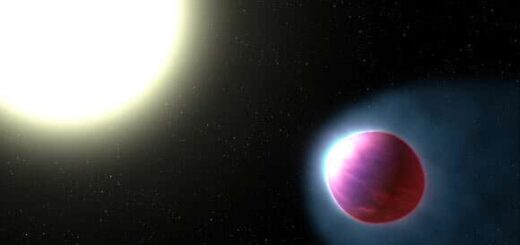Universe has way more huge stars than scientists thought

A surprisingly large number of massive stars have been spotted in regions across the universe, shedding new light on how galaxies near and far evolve, a new study shows.
In the study, astronomers using the Atacama Large Millimeter/submillimeter Array (ALMA) in Chile investigated intense bouts of star formation in four distant, gas-rich starburst galaxies, where new stars are formed 100 or more times faster than they are in our own galaxy, the Milky Way.
Massive stars in these galaxies produce outflows of gas and create supernova explosions, which release large amounts of energy and stellar material into space. This type of activity can have a significant impact on the area surrounding these stars, according to a statement from the European Southern Observatory (ESO). [Supernova Photos: Great Images of Star Explosions]
Using a new technique similar to radiocarbon dating, the researchers looked for signatures of different types of carbon monoxide to determine the mass distribution of stars in the starburst galaxies. While oxygen isotopes are associated with larger, more massive stars, carbon isotopes are associated with smaller, intermediate-mass stars, Zhi-Yu Zhang, lead researcher and astronomer from the University of Edinburgh, said in the statement. Because carbon and oxygen combine to form carbon monoxide, this means different variations of carbon monoxide form more frequently in larger stars than in smaller ones.
Compared to low-mass stars such as our sun, which can shine for billions of years, massive stars have a much shorter life span. Understanding the distribution of different types of stars provides insight on the formation and evolution of galaxies throughout the history of the universe, according to the statement.
The new study revealed a higher proportion of massive stars within these starburst galaxies than previously expected. Researchers added that similar results were found closer to home in a region of a satellite galaxy of the Milky Way called the Large Magellanic Cloud.
Using ESO’s Very Large Telescope, a team of researchers from the University of Oxford detected exceptionally massive stars in 30 Doradus, which is the brightest star-forming region in our galactic neighborhood.
“Our findings lead us to question our understanding of cosmic history,” Rob Ivison, co-author of the study and director for science at ESO, said in the statement. “Astronomers building models of the universe must now go back to the drawing board, with yet more sophistication required.”



 Creators of mankind
Creators of mankind Description of “Tall white aliens”
Description of “Tall white aliens” Where they came from?
Where they came from? About hostile civilizations
About hostile civilizations The war for the Earth
The war for the Earth “Tall white aliens” about eternal life
“Tall white aliens” about eternal life Video: “Nordic aliens”
Video: “Nordic aliens” Aliens
Aliens Alien encounters
Alien encounters The aliens base
The aliens base UFO
UFO Technology UFO
Technology UFO Underground civilization
Underground civilization Ancient alien artifacts
Ancient alien artifacts Military and UFO
Military and UFO Mysteries and hypotheses
Mysteries and hypotheses Scientific facts
Scientific facts


















